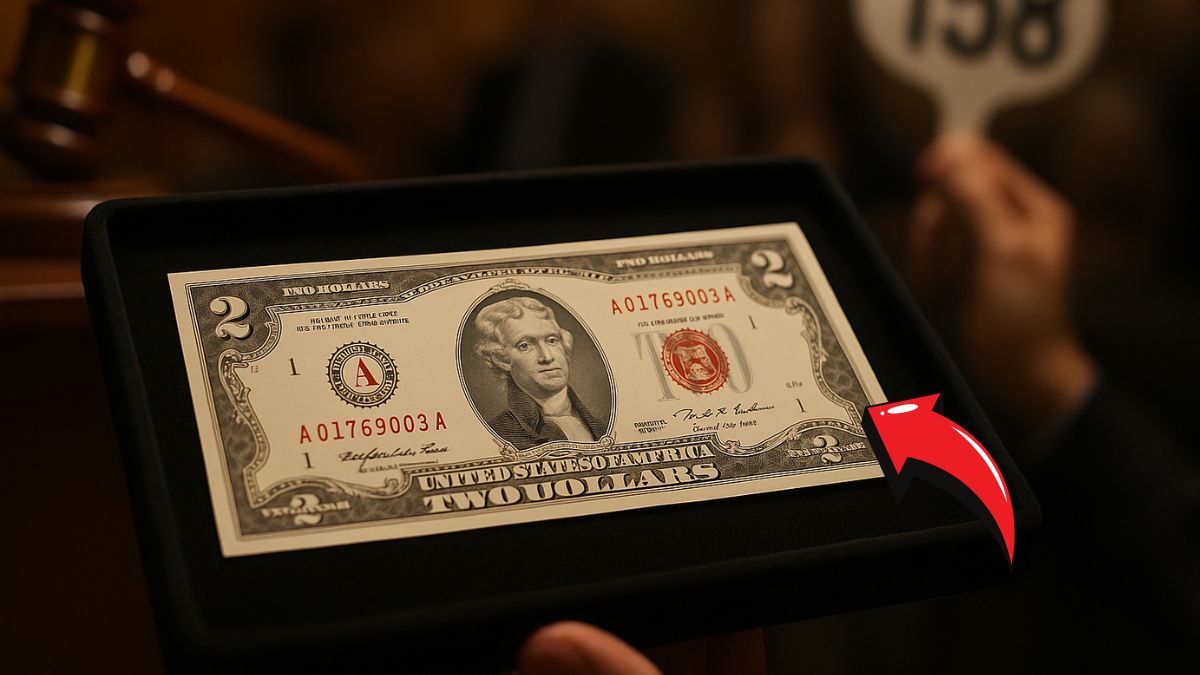Rare 1976 $2 Bill Fetches $35,250 at Auction – Here’s Why It’s Worth So Much
In a remarkable event that has captivated the numismatic community, a rare 1976 $2 bill recently fetched an astonishing $35,250 at auction.
This sale underscores the significant value that certain paper currencies can attain due to unique characteristics and historical significance.
Understanding the 1976 $2 Bill
The 1976 $2 bill was reintroduced as part of the United States Bicentennial celebration. Featuring Thomas Jefferson on the obverse and a depiction of the Signing of the Declaration of Independence on the reverse, it was intended to promote the use of the $2 denomination.
Despite its historical significance, the bill was met with public skepticism, leading many to hoard them, believing they would become valuable collectibles.
What Made This Particular Bill So Valuable?
Several factors contributed to the exceptional value of this specific $2 bill:
1. Extremely Low Serial Number
The bill bore the serial number L00000001A, indicating it was the very first note printed for the San Francisco Federal Reserve Bank in that series. Such low serial numbers are highly coveted among collectors due to their rarity.
2. Pristine Condition
Graded as Gem Uncirculated, the bill was in impeccable condition, free from any folds, creases, or signs of circulation. High-grade notes are significantly more valuable, especially when combined with other rare features.
3. Star Note Designation
This bill was also a Star Note, indicated by a star symbol (*) at the end of the serial number. Star Notes are replacement notes printed to replace misprinted or damaged ones and are produced in smaller quantities, enhancing their rarity.
Comparison of 1976 $2 Bill Values
| Feature | Estimated Value |
|---|---|
| Common circulated note | $2 |
| Uncirculated standard note | $5 – $10 |
| Star Note | $15 – $25 |
| Low serial number (e.g., 00000001) | $20,000 – $35,000+ |
| Star Note with low serial number | $35,000+ |
Factors Influencing the Value of $2 Bills
Several elements can affect the value of a $2 bill:
- Serial Numbers: Notes with unique or low serial numbers (e.g., 00000001) are highly sought after.
- Condition: Uncirculated or high-grade notes fetch higher prices.
- Star Notes: Replacement notes are rarer and more valuable.
- Historical Significance: Bills associated with significant events or errors can be more valuable.
The sale of the rare 1976 $2 bill for $35,250 highlights the significant value that certain paper currencies can attain due to unique features like low serial numbers, pristine condition, and Star Note designation.
Collectors and enthusiasts should be vigilant in examining their currency holdings, as hidden treasures may lie within everyday items.
FAQs
What is a Star Note, and why is it valuable?
A Star Note is a replacement banknote issued when a misprint or error occurs during production. Instead of reprinting the same serial number, a star is added to the end of the serial number. These notes are produced in smaller quantities, making them rarer and more desirable to collectors.
How can I determine if my $2 bill is valuable?
To assess the value of your $2 bill, examine the serial number for uniqueness or low numbers, check for a star symbol indicating a Star Note, and evaluate the condition of the bill. Consulting a currency appraisal expert or referencing reputable numismatic guides can provide further insights.
Where can I sell a rare $2 bill?
Rare $2 bills can be sold through various channels, including online auction platforms like eBay, specialized currency auction houses, or directly to collectors through numismatic forums and communities. Ensuring proper authentication and grading can help in achieving the best sale price.

